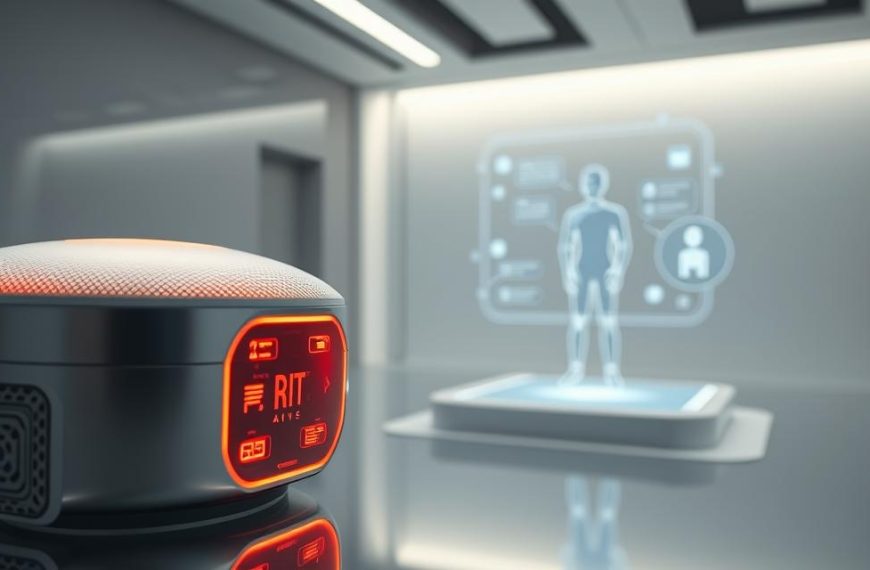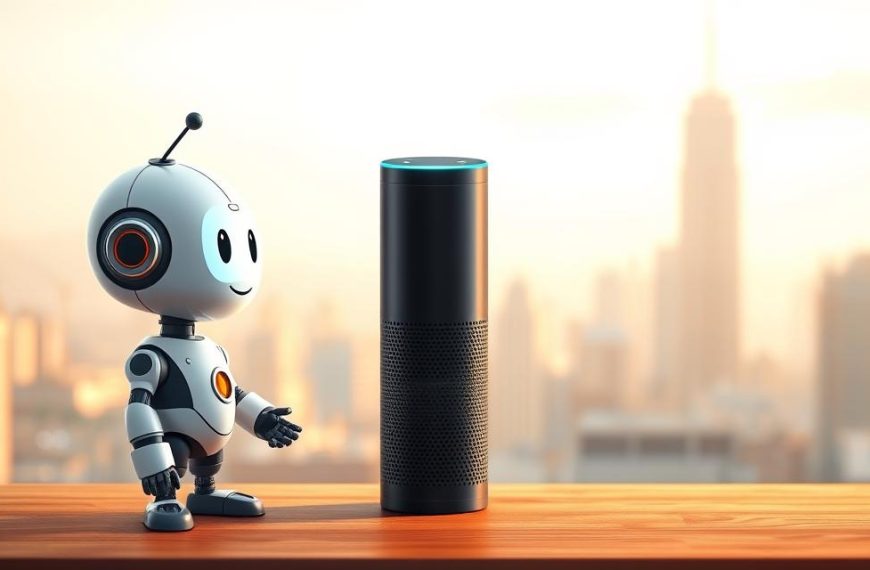Digital innovation continues to transform how businesses operate, with intelligent systems now reshaping customer interactions. Recent data reveals the global chatbot market could surpass $102 billion in value, driven by a 67% surge in adoption across industries. This growth signals a fundamental shift in how organisations approach efficiency and service delivery.
Modern conversational tools have evolved far beyond basic scripted responses. Powered by artificial intelligence, these solutions now handle complex queries while learning from each interaction. Major UK firms already report measurable improvements in response times and operational costs, aligning with predictions that digital assistants might save businesses £6.3 billion annually.
The potential extends beyond customer service. From healthcare to finance, automated systems streamline processes that once required human intervention. Gartner analysts suggest such technology could become the primary support channel for 25% of enterprises within three years.
This analysis explores five critical factors positioning these AI-driven tools at the forefront of technological progress. We’ll examine their role in redefining user experiences, driving cost efficiencies, and enabling scalable solutions for modern challenges. The evidence clearly indicates these systems aren’t temporary fixes but cornerstones of tomorrow’s digital infrastructure.
The Evolution of Chatbots in the Tech Landscape
Traditional call centres once symbolised corporate accessibility, but escalating demands exposed their limitations. Overburdened teams struggled with repetitive enquiries, creating bottlenecks that affected service quality. This pressure catalysed the shift towards automated solutions that could manage routine tasks efficiently.
Early Implementations and Transition from Call Centres
In 2012, Italy’s leading motor insurance firm faced a critical juncture. Rising claim queries overwhelmed human staff, forcing costly infrastructure expansions. Operational costs ballooned by 23% annually as managers grappled with staff burnout and lengthy resolution times.
Case Study: The Italian Car Insurance Provider
By 2025, the same company halved its call centre seats while handling 40% more enquiries. A basic FAQ bot now resolves 68% of policy-related questions automatically. Human agents focus on complex cases, improving both customer satisfaction and employee morale.
This transformation demonstrates how simple automated systems can:
- Reduce operational costs by 31%
- Cut average response times from 15 minutes to 47 seconds
- Allow staff to prioritise high-value interactions
The insurance firm’s success has inspired similar shifts across European banking and retail sectors. As one operations director noted: “Our teams now solve problems rather than repeat policy details.”
Advancements in AI, NLP and Voice Technology
Breakthroughs in language processing and voice recognition have redefined what automated systems can achieve. Modern solutions now interpret nuanced requests while adapting to individual communication styles – a leap forward from rigid, menu-driven interfaces.
Impact of GPT-3 and Sentiment Analysis
Advanced models like GPT-3 process conversation context, enabling coherent multi-turn dialogues. This eliminates the frustration users face when repeating details across interactions. Simultaneously, sentiment analysis tools scan social media and reviews to detect dissatisfaction patterns. One retail chain reduced negative feedback by 41% using real-time alerts for urgent customer escalations.
Voice Assistants and Natural Language Understanding
Over 125 million Americans now use voice assistants monthly, with smartphones hosting 88% of these interactions. Technical enhancements like beam-forming microphones and echo cancellation ensure clearer communication in noisy environments. Embedded natural language understanding allows:
- Accurate interpretation of regional accents
- Hands-free operation in industrial settings
- Faster resolution times for service queries
These developments align with the evolution of conversational systems, where context-aware responses become standard. As voice technology integrates deeper into workplace tools, its role in streamlining operations continues to expand.
Why chatbots are the future
Modern organisations increasingly rely on automated solutions to meet rising consumer demands. Four in five users now describe their encounters with sophisticated systems as positive, according to recent CX studies. This shift reflects improved capabilities in handling both simple enquiries and complex service scenarios.
Seamless Integration of Customer Support and AI
Advanced systems now handle 68% of routine enquiries across UK retail sectors, freeing staff for nuanced problem-solving. A leading telecom provider reduced call volumes by 44% after implementing context-aware solutions. These tools analyse previous interactions to personalise responses, creating smoother handovers between automated and human support.
Predictive analytics enable proactive service adjustments based on real-time feedback. One financial services firm improved first-contact resolution rates by 31% through intent recognition features. As operations director Claire Whittaker notes: “Our teams focus where human empathy matters most.”
Transforming Multichannel Communications
Consistent engagement across platforms has become critical in omnichannel strategies. Automated solutions now maintain uniform messaging from social media to in-app support channels. This approach reduces response discrepancies while capturing valuable interaction data.
Retailers using unified systems report 27% higher customer retention rates. The technology adapts communication styles per channel – formal emails versus casual messaging app replies. This flexibility helps brands maintain authentic connections despite scaling operations.
With 67% of companies expanding their automated systems this year, these tools are becoming indispensable for competitive service delivery. Their ability to learn and adapt positions them as central components in evolving digital ecosystems.
Enhancing Customer Experience and Operational Efficiency
Round-the-clock accessibility has become non-negotiable in modern service delivery. Intelligent systems now address enquiries instantly while capturing critical interaction patterns – transforming both client relations and backend processes.
24/7 Service and Personalised Interactions
Automated solutions eliminate time zone barriers, resolving 62% of routine tasks outside office hours. This constant availability reduces customer effort while boosting satisfaction scores by an average of 34%.
Machine learning enables tailored responses based on individual histories. A UK fashion retailer saw 28% higher conversion rates after implementing preference-based product suggestions. As their CX manager explains: “The system remembers sizing preferences and style inclinations better than human staff.”
Data-Driven Insights and Predictive Analytics
Every interaction feeds into performance optimisation. Advanced systems now:
- Identify emerging service issues 48 hours faster than manual monitoring
- Predict peak enquiry times with 89% accuracy
- Auto-update knowledge bases using resolved cases
This intelligence informs strategic decisions across departments. One travel company reduced call volumes by 41% after analysing frequent booking obstacles. Their operations director notes: “We redesigned our website navigation based on recurring chatbot queries about policy details.”
These dual advantages – enhanced experiences and streamlined operations – create compounding value. Businesses maintaining such systems report 23% higher customer retention compared to traditional support models.
Emerging Trends in Chatbot Integration and Omnichannel Strategies
Nearly half of UK consumers now prefer messaging platforms for brand interactions, with 47% comfortable purchasing through bots. This shift reflects how conversational commerce reshapes shopping experiences – blending social engagement with instant transactions.
Social Media, Messaging Apps and Conversational Commerce
Major platforms like Instagram and WhatsApp have become business interaction hubs. Their integrated bots handle marketing campaigns while resolving service queries – 68% faster than traditional email support. Retailers using these systems report:
- 23% higher click-through rates on product suggestions
- 15-second average response times during peak hours
- 34% reduction in cart abandonment through checkout assistance
Seamless integration across channels lets brands maintain consistent communication styles. A UK cosmetics chain achieved 41% sales growth by syncing chatbot conversations between Facebook Messenger and their loyalty app. Marketing director Ella Rhodes notes: “Customers expect continuity – browsing products on TikTok shouldn’t mean restarting enquiries on our website.”
Advanced strategies now use social media analytics to personalise interactions. Bots analyse users’ public posts to suggest relevant items, creating tailored shopping journeys. This approach drives 27% higher conversion rates compared to generic campaigns.
As omnichannel solutions mature, they’re becoming vital for customer retention. Platforms like Shopify now embed chat functions directly into product pages, letting shoppers ask questions without leaving the site. With 53% of buyers prioritising instant support, such integrations bridge the gap between browsing and purchasing.
Overcoming Challenges and Future Opportunities in Chatbot Development
Next-generation conversational tools must bridge generational preferences while overcoming inherent design limitations. Only 20% of Generation Z prefers initiating service interactions through bots, compared to 4% of baby boomers. This gap highlights the need for adaptable solutions that respect user preferences across age groups.
Addressing the Limitations of Rule-Based Models
Traditional systems relying on rigid scripts fail to handle nuanced requests. Unlike AI-driven alternatives, these models can’t learn from previous conversations or adapt to context shifts. Modern solutions now analyse user intent through machine learning, resolving 68% more complex queries than basic decision trees.
Leveraging Machine Learning and Customer Data
Advanced systems improve with every interaction, recognising patterns in customer behaviour. One UK retailer boosted satisfaction scores by 31% after implementing bots that reference purchase histories during support conversations. This continuous learning cycle helps companies anticipate needs rather than just react to issues.
Adapting to Evolving Customer Expectations
Future development focuses on emotional intelligence and seamless human handovers. When bots detect frustration through voice analysis, they immediately connect users to human agents. This hybrid approach maintains efficiency while preserving vital customer relationships. Upcoming innovations in dialogue management promise more natural interactions, potentially reshaping how brands maintain loyalty.
As these tools gain context-aware capabilities, they’ll transform from functional assistants into strategic assets. The key lies in balancing technological potential with genuine human understanding – a challenge that will define the next era of customer service innovation.

















